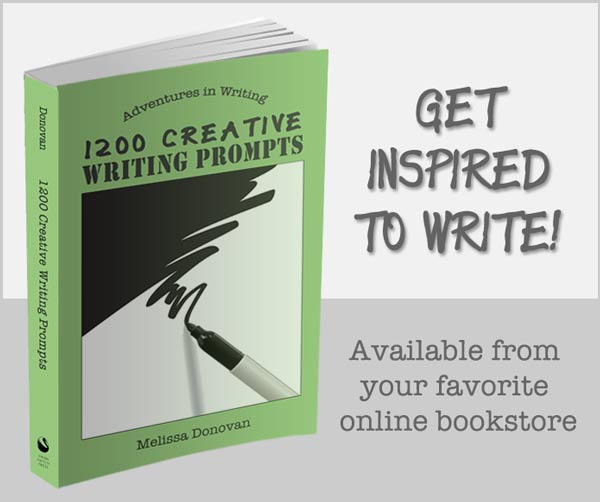Today’s fiction writing exercise is excerpted from Story Drills: Fiction Writing Exercises, which includes lessons and exercises that help beginning to intermediate storytellers study and practice the craft of storytelling. This exercise, which is from a chapter on narrative, focuses on dialogue. Enjoy!
Dialogue
Dialogue is one of the most compelling elements of any narrative. It can be used to advance the plot, establish relationships between the characters, reveal key information about the characters, describe the setting, and set the theme.
It can’t be said enough that readers connect with a story through its characters, so it makes sense that dialogue often makes up some of the most critical parts of a story. We humans are, after all, social creatures, and we all experience the highs and lows, the friction and harmony, that relationships bring into our lives. In a story, we see the dynamics of relationships played out through dialogue. And readers connect with those dynamics, especially when they’re well executed.
Well-written dialogue flows seamlessly. Readers can hear the characters’ voices in their minds. It sounds like a real conversation. However, the secret to good dialogue is that even though it sounds authentic, it’s not. If you transcribe a real conversation, it won’t work in a story’s narrative. It will be peppered with a bunch of unnecessary words and statements ranging from lengthy introductions and farewells, small talk, and ums. Good dialogue gets to the heart of matters quickly and efficiently. Consider the following:
“Hey, Joe.”
“Hi, Sue.”
“How are you?”
“Not bad. How are you?”
“Pretty good. Just waiting for summer so I can take my kids camping.”
“I hear you. As soon as the sun comes out, I’m heading to the beach.”
“Sounds awesome. Say, I wanted to talk to you about a murder case we worked on a few years ago.”
The characters speak over six lines of dialogue before they get to the good stuff. It feels like a long slog. But this is what a real conversation would look like, transcribed to the page. We writers use our storytelling magic to tighten it up into a more riveting conversation:
“Joe, I need to talk to you about the Watershed case.”
Joe almost lurched out of his chair. He hadn’t heard Sue approaching his desk from behind.
Study:
Record a real conversation, and then transcribe one to three pages of it. Approach this exercise ethically—you are not advised to tape people without their knowledge or consent. As an alternative, simply listen carefully during a conversation—notice the ums and ahs, the small talk, the filler that we stuff into our real-life dialogue. You can also search online for conversations that have been recorded or transcribed.
Practice:
Write a scene that is composed mostly (if not entirely) of dialogue between two or three characters. The conversation should reveal the following: what a character wants (goals), an inner struggle, a character’s strengths, a character’s weaknesses, and at least one clue about each character’s personality.
Questions:
Why does real human conversation translate poorly to the page? How can dialogue be used to help readers gain deeper understanding of the characters? Why is dialogue one of the most important elements of storytelling?






This article has helped expanciate further since the intermediate writing class I attended sometime ago,and will go a long in the drive towards creative writing basics understanding for prospective writers, thanks melissa!
You’re welcome!
Hello Melissa,
Great article, thank you!
I have some thoughts on why human conversations translate so poorly into dialogue. When we speak to each other face to face there are certain pleasantries or other cultural “requirements”, if you will, that we engage in. Most of these are filtered out or at least passed over in our consciousness. Yes, we hear them and respond, but almost automatically. It is the meat – the heart – of what we came to talk about that gets and holds our attention. Those things are the real subject of our conversation. Thus, when we read dialogue in a story we also filter out most of the pleasantries and the cultural expectations. Only if these things go to further character development or help set the scene are we really interested in them. Perhaps that is why written dialogue needs to “cut to the chase” so to speak.
Dialogue helps us gain a deeper understanding of characters by letting us hear their voices. Idioms, expressions, pronunciations, emotional responses to situations, all of these can be heard in their voices which can tell us many things about the person speaking. We might hear them use idioms that help us figure out their background: Jake pushed the weathered straw hat back on his head, squinting into the sun, “We’ve had to ride herd on ’em pretty hard.” Jake’s got to be some sort of cowpoke, right? Seems that way from how he talks.
Dialogue is one of the most important elements in storytelling because it’s the characters directly telling us what we really want to know. Yes, the author can fill us in with information. But we want to know what Jake thinks, what he feels, what he has to say about those people he’s had to watch so closely. We can learn this information by just having the author relate it to us. But isn’t it better to get it directly from Jake?
Hi Michael. I agree with everything you’ve said about dialogue. Very astute observations!